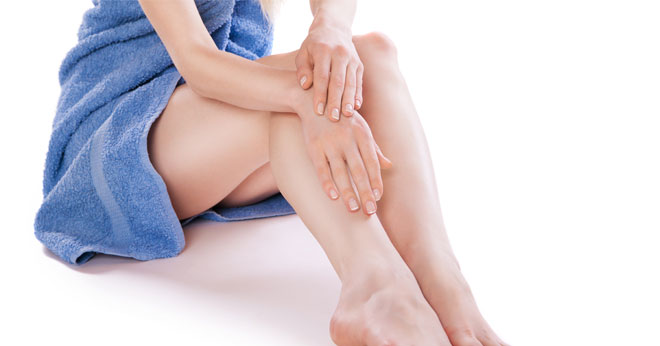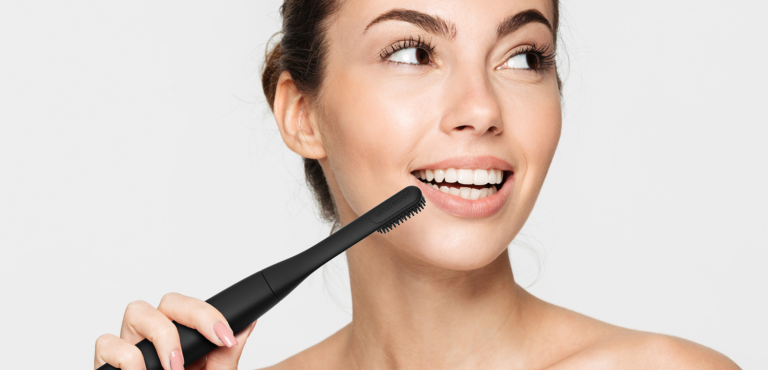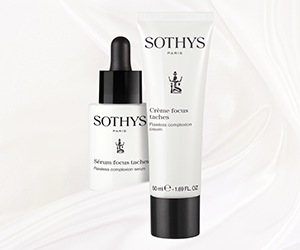Oh joy, it’s spring, and summer is on the horizon! Time to put away those heavy winter clothes and think about the delights of strappy tops and sleeveless dresses – but alas, for many of us, the thought of baring our skin isn’t altogether a happy one. Not because of bingo wing worries, or even the dreaded cellulite, but because of those pesky persistent red or white bumps on our upper arms and sometimes on our legs too.
Also known as chicken skin or milk spots, the condition is a form of eczema called keratosis pilaris or KP. It’s extremely common, affecting almost half of all adults and up to eighty percent of teenagers. It usually shows up as small red slightly-inflamed bumps on the upper arms and thighs, and can appear on the buttocks and face too. While it may look almost like acne, it’s actually a genetic follicular skin condition related to eczema.
However it manifests, the bumps are clogged pores where skin cells become hardened inside the pore and inflammation occurs. Keratin is a natural protein found in the skin, but some people produce excess keratin, which forms plugs inside the hair follicle. Many KP bumps contain an ingrown hair, which has coiled back into the skin as a result of the keratinised skin preventing it from exiting.
Those prone to eczema, asthma, and allergies are more likely to be afflicted with KP, and up to fifty percent of people who struggle with it have a family often starts in childhood and improves with age. It’s generally worse in winter, when our skin is dryer, and experts believe also that the stresses of our modern lifestyles can contribute to flare-ups. KP can occur or worsen in pregnancy or after giving birth, possibly due to fluctuating hormone levels.
Though a medically-harmless condition, KP can be unsightly and distressing and while it can’t be cured or prevented, there are ways to minimise the symptoms and reduce the appearance of the bumps. Because it’s an inflammatory disorder, anything you can do to reduce inflammation will help. Don’t use harsh drying soaps and cleansers, and avoid rubbing your skin too hard; a combination of gentle chemical exfoliation and rich moisturising is the way to go. Limit bathing or showering to under fifteen minutes, and keep the water warm rather than hot to avoid stripping natural oils from your skin. Use a mild natural cleanser and pat your skin dry. Choose a moisturiser that contains urea or propylene glycerol to soften dry skin or lactic acid to help remove extra keratin, and apply it liberally at least twice a day.
If you prefer the natural approach, some studies have found that moisturising with coconut oil works well in reducing inflammation and redness; coconut oil also has anti-bacterial properties, doesn’t feel greasy, and absorbs quickly into the skin. Expose your skin to the sun as much as possible, and consider using a home humidifier in winter. Taking an Omega-3 supplement to moisturise from the inside out could help.
Ask your pharmacist for a cream containing a chemical exfoliant such as an alpha hydroxyl acid (AHA) to unclog pores, and use that once a day. The same acids don’t work for everyone, so if you don’t see improvement after a few weeks you may need to switch to a product with a different exfoliating agent.
In severe cases, or if there isn’t visible improvement in three to four weeks, your doctor may prescribe a topical retinol product to increase new cell turnover and help unclog pores, a topical antibiotic, or a short-term anti-inflammatory corticosteroid. To accelerate exfoliation, a dermatologist can do microdermabrasion and a light chemical peel, followed by a deep moisturising mask.
Persistence is key. Treatment of KP needs to be consistent and on going – if you stop, skin begins reforming around the hair follicles. Keep it up, and this summer could be a brighter – and smoother – one for you.
Other articles you may be interested in:
WTF beauty treatments
Exfoliation
Beautify your skin from the inside
Who should be performing beauty procedures?
The low-down on laser skin rejuvenation






3 Responses
I would appreciate more discussions on KP re treatments that work. Thank you.
I have this on my face and at first I thought it was acne so I used benzyl peroxide, I exfoliated, I used masks once a week and went for a few MDA treatments to no avail. Eventually I went to see a dermatologist because I was beyond distraught with my face. He told me that exfoliating the way I was doing actually caused more damage to my skin. He gave me a retional cream to use at night and another day cream. Literally after 4 months, my skin had smoothed out completely and I noticed such a difference. I stopped using the creams because I didn’t have time to go get more from him and it flared up again. Once you find something that works, keep using it! I did try the coconut oil and I don’t find it to be effective, especially in winter. If I tried it again, I would re-apply throughout the day.
Oh my gosh. I just got these spots on my arms & legs. I hate it, because already I have very bad eczema… the struggle is real.